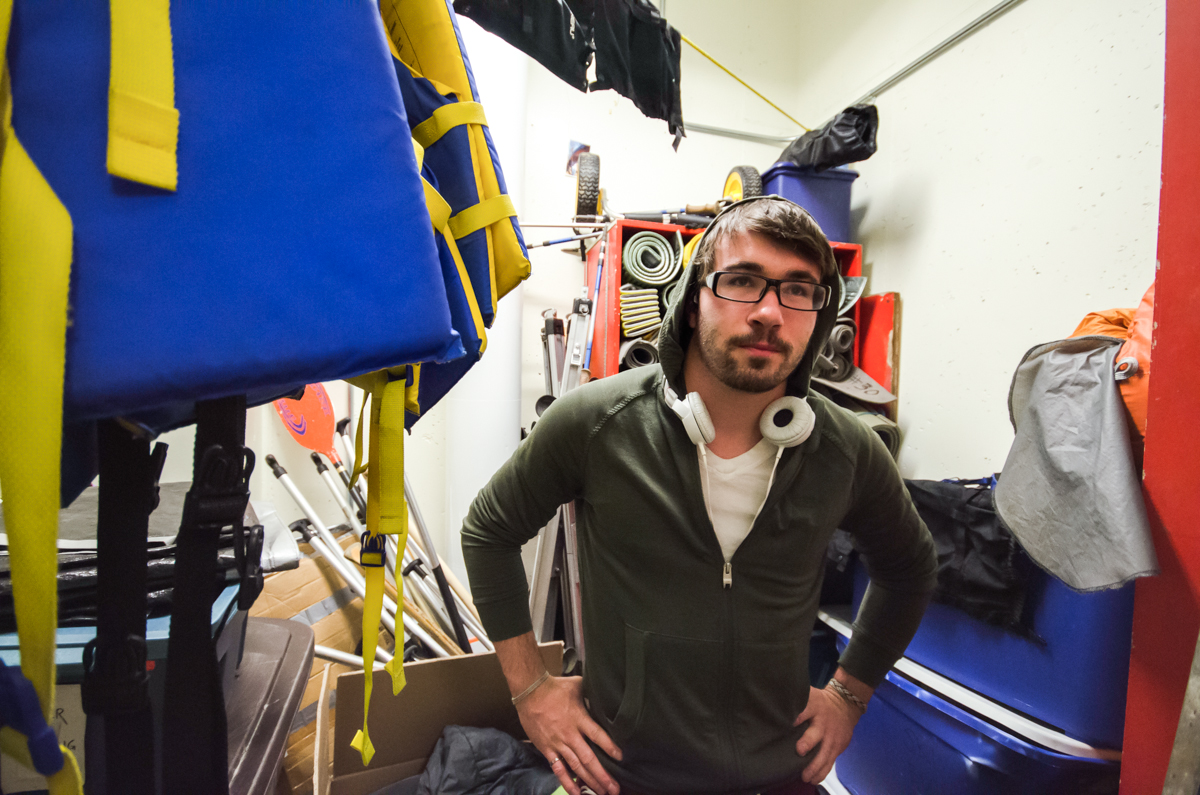
Student clubs under Athletics and Recreation may not be getting the support they need.
This year, there are 27 sanctioned recreational clubs under A&R, along with the 13 varsity teams and 20 varsity clubs that compete for Queen’s in interuniversity play.
For students running rec clubs, considerable legwork goes into spearheading trips and coordinating members. Athletics and Recreation is the overarching support system for these clubs, but some students say the department can be more of a hindrance than help.
Luke Morrissey is the president of the Outdoors Club, a student group that runs up to three trips per weekend throughout the school year.
The club has camped, canoed, skied, sledded and backpacked across Ontario, Quebec and the United States. For Morrissey, though, the toughest challenge can be convincing A&R to act on his club’s requests.
“There are a lot of hoops we have to jump through bureaucratically to get stuff to happen,” said Morrissey, Sci ’14.
“They say they support us in what we want to do, but if you want to help us become a successful club and expand, you’re not doing that. You’re making it harder.”
There are certain benefits of operating as a rec club under A&R. Clubs can book up to four hours of free facility use per week, have designated storage space for their equipment and receive liability coverage for every trip.
Those benefits, though, come at the cost of bureaucratic stagnation and a lack of communication, according to Morrissey. These two factors coalesced earlier this year, when the Outdoors Club was unable to run any trips until after Thanksgiving.
As a “high-risk” student group, Morrissey said the Outdoors Club has to file a particular set of forms with A&R before embarking on any trip.
This year, he said, A&R began to enforce a hard three-week deadline, forcing clubs to finalize their itinerary and participant list 21 days before departure.
The imposition of the deadline negatively affected the Outdoors Club as a whole this year. Instead of kickstarting their weekend trips immediately in September, Morrissey said, the club had to wait for A&R to retrain a student executive member in how to fill out trip forms.
That session, Morrissey said, was set up two weeks into the fall semester. The club then collected trip sign-ups and sweated out the three-week grace period. It was well into October before they could truly venture outdoors.
“They kind of change the rules, but never fully inform you of everything and all the implications until you’re breaking that rule,” Morrissey said. “That creates friction.”
In between trips, Morrissey said two small rooms in the ARC are allocated to the club to store their equipment: sleeping bags, tents, life jackets, paddles, skis and more.
The club moved from the PEC to the ARC when the latter opened in 2010, but hasn’t seen their storage space increase, according to Morrissey, despite a demonstrated need.
At present, there isn’t enough space to store their equipment properly, Morrissey said, meaning gear that might typically last over a decade is good for just seven or eight years.
“They’re shooting themselves in the foot, because it’s technically all their equipment,” he said. “[Because] we’re storing them in such inefficient manners, they’re getting destroyed much earlier.”
As the president of Queen’s recreational Climbing Club (QCC), Jeremy Waugh faces a similar equipment conundrum.
Most climbing ropes, he said, must be retired after a few years for safety reasons — but due to A&R policy, the club isn’t allowed to dispose of them.
“There’s lockers and lockers [at the ARC] filling up with retired gear, and it just sits there over the years,” said Waugh, CompSci ’14. “If the club purchases equipment with their money from members, there are some regulations with that equipment. We can buy it, we can use it, but we can’t throw it out.”
Waugh’s a three-year member of the Climbing Club, which operates primarily out of the Boiler Room Climbing Gym on Cataraqui St. and organizes around five to six out-of-city weekend climbing excursions per year.
As A&R has increased their regulations in recent years, Waugh said, the number of trips outside Kingston has dwindled.
“The number of official trips run by the QCC is fewer because of the logistical nightmare of filling out these forms and running official club trips,” he said.
“What happens in most cases is members will run trips privately, outside of the umbrella of the club and the ARC, to avoid the paperwork and the logistical issues of running trips.”
Just as trip participants must be locked down 21 days in advance, so too must the club’s destination.
This poses problems for the Climbing Club’s outdoor outings. Since climbing in the rain isn’t safe, the club can be left in the lurch when confronted with untimely weather.
“You have to know where you’re going exactly almost a month before it’s happening,” Waugh said. “When that day comes, if the weather is bad, we can cancel the trip, but we can’t change the location of the trip.
“If it was just you and a couple of friends, you’d have a few locations in mind — you’d always have a backup location,” he added.
“There really isn’t an option to do that with the ARC right now … If there was more leniency, it would make running trips easier.”
Athletics and Recreation did not respond to a request for comment.
Tags
Athletics, Morrissey, Recreation, Student clubs, Waugh
All final editorial decisions are made by the Editor(s)-in-Chief and/or the Managing Editor. Authors should not be contacted, targeted, or harassed under any circumstances. If you have any grievances with this article, please direct your comments to journal_editors@ams.queensu.ca.
